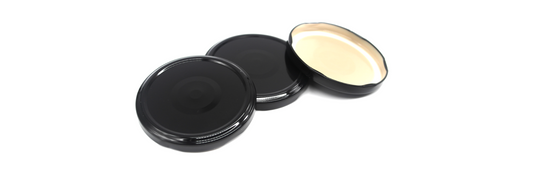Frustration-Free Packaging (FFP) promises a win-win for both consumers and the environment. But is it really good? This article dives into FFP, exploring its core principles, potential environmental benefits, the difference to traditional packaging and the design elements that make opening a breeze. We'll also critically examine any limitations to see if FFP truly lives up to its name.
- Guide to Creating Your Best Product Packaging Design
- Experience in designing tea packaging helps increase product brand value
- Packaging ideas: the best packaging ideas for each product line
What Is Frustration Free Packaging?
Traditional packaging can often present a challenge, leading to frustration and wasted materials. Frustration-Free Packaging (FFP) addresses these concerns by prioritizing a user-centric and environmentally conscious approach. This Amazon program collaborates with manufacturers to design packaging that streamlines the opening experience while minimizing its environmental footprint.
Here are the key tenets of FFP:
- Effortless User Experience: FFP eliminates the need for tools or complex closures. It utilizes features like resealable tabs, tear-away strips, and other intuitive designs, ensuring a smooth and frustration-free opening process.
- Minimal Material Usage: By incorporating the product itself into the shipping container whenever possible, FFP reduces the reliance on excess cardboard boxes, plastic wrap, air pillows, and Styrofoam peanuts. This translates to a significant reduction in packaging waste.
- Recyclable Materials: FFP prioritizes the use of recyclable cardboard, paper, and plastic components. This promotes a more sustainable packaging lifecycle and reduces the environmental impact of product delivery.
Overall, frustration free packaging is a program aimed to creat better customer experience and reduce environmental impact of the packaging. But is it really better than the tradtional packaging? In the next section let’s look closer to environmental impacts of frustration free packaging and how it’s is different to the traditional one.
Environmental Impact of Frustration Free Packaging
The burgeoning e-commerce industry has revolutionized how we shop, but it has also brought environmental concerns to the forefront. Traditional packaging practices often rely on excessive materials, leading to significant waste generation and resource depletion. Frustration-Free Packaging (FFP) emerges as a sustainable alternative, demonstrably reducing the environmental footprint associated with product delivery.
Here's how FFP makes a positive difference:
- Reduced Waste: FFP uses minimal materials by employing the product itself as part of the shipping container whenever possible. This eliminates the need for unnecessary cardboard boxes, plastic wrap, air pillows, and Styrofoam peanuts. Studies have shown a substantial decrease in cardboard and plastic waste compared to traditional packaging methods.
- Recyclability: FFP prioritizes recyclable materials like cardboard, paper, and some plastics. This promotes a more circular economy where these materials get recycled and reused instead of ending up in landfills. This reduces the demand for virgin materials and lowers the overall environmental burden.
- Lower Ecological Footprint: Less packaging translates to less weight during transportation. This can lead to a significant decrease in the carbon footprint associated with the product's lifecycle. Transportation contributes heavily to greenhouse gas emissions, so reducing packaging weight can have a positive impact on climate change.
When comparing to traditional packaging, FFP has its own advantages. Here is a table showing how FFP better:
|
Feature |
Traditional Packaging |
Frustration-Free Packaging (FFP) |
|
Material Usage |
Often uses excess cardboard boxes, plastic wrap, air pillows, and Styrofoam peanuts. |
Minimizes packaging by utilizing the product itself as part of the shipping container and uses minimal dunnage materials. |
|
Waste Generation |
Contributes significantly to landfill waste. |
Significantly reduces waste generation. |
|
Recyclability |
May use a mix of materials, some of which are difficult or impossible to recycle. |
Prioritizes recyclable materials like cardboard, paper, and some plastics. |
|
Carbon Footprint |
Bulky materials lead to heavier shipments and higher fuel consumption. |
Minimized materials lead to lighter shipments and a lower carbon footprint. |
|
User Experience |
Can be difficult to open, often requiring tools. |
Designed for easy opening with features like resealable tabs and tear-away strips. |
Related: How Does Food Packaging Impact the Environment?
Overall, FFP is a better choice when comparing to traditional packaging. But how to design packaging to avoid frustration? Discover in the next part.

Packaging Design to Avoids Frustration
Frustration-Free Packaging (FFP) isn't just about using less material; it's about creating a user experience that's as smooth as it is sustainable. Here's how clever design features play a key role:
- Resealable Closures: Forget the struggle of reclosing a package after opening. FFP utilizes resealable tabs or lids, allowing for easy access to the product and secure storage once opened.
- Tear-Away Strips: No more hunting for scissors! Strategically placed tear-away strips transform opening the package from a chore into a simple tear, eliminating the need for tools and saving you frustration.
- Shape Optimization: Imagine a perfectly fitted puzzle piece. FFP packaging is designed to hug the product's form, minimizing the need for extra dunnage materials like air pillows or packing peanuts. This not only reduces waste but also creates a secure and stable environment for the product during shipping.
- Clear Instructions: Sometimes, all it takes is a clear roadmap. FFP often incorporates simple and easy-to-understand instructions directly on the packaging. These visual cues guide the user on the most efficient way to open the package, ensuring a frustration-free experience.
By incorporating these design elements, FFP goes beyond just minimizing environmental impact. It creates a user-friendly and satisfying experience, making you happy and the planet a little healthier.
Conclusion
Frustration-Free Packaging (FFP) is a win-win for both consumers and the environment. It minimizes materials, promotes recyclability, and boasts clever designs for effortless opening. This translates to less waste, a lower carbon footprint, and a user-friendly experience. While some limitations may exist, FFP's focus on innovation positions it as a leader in sustainable e-commerce.









